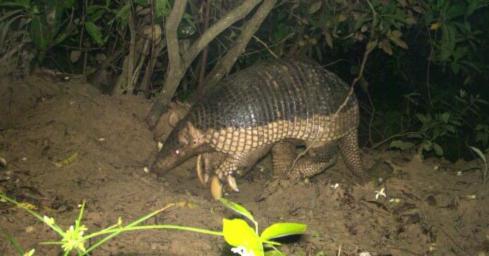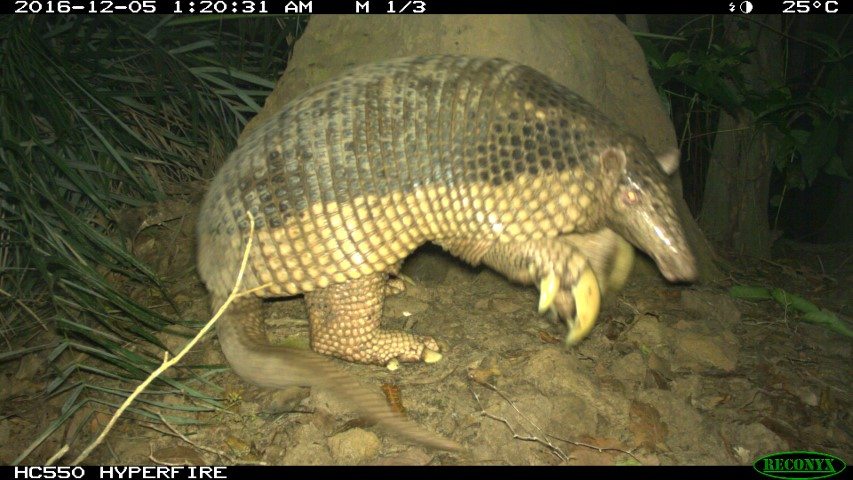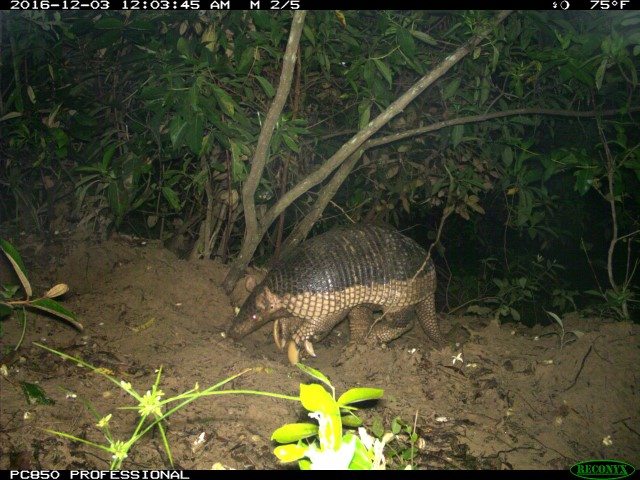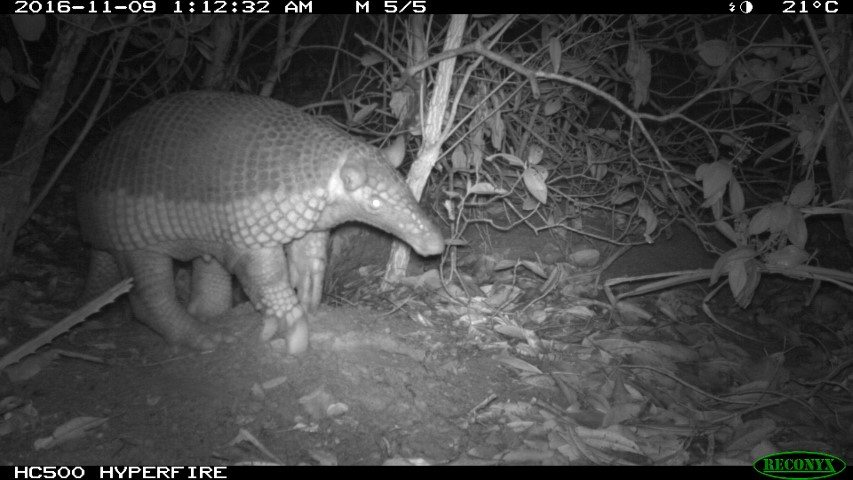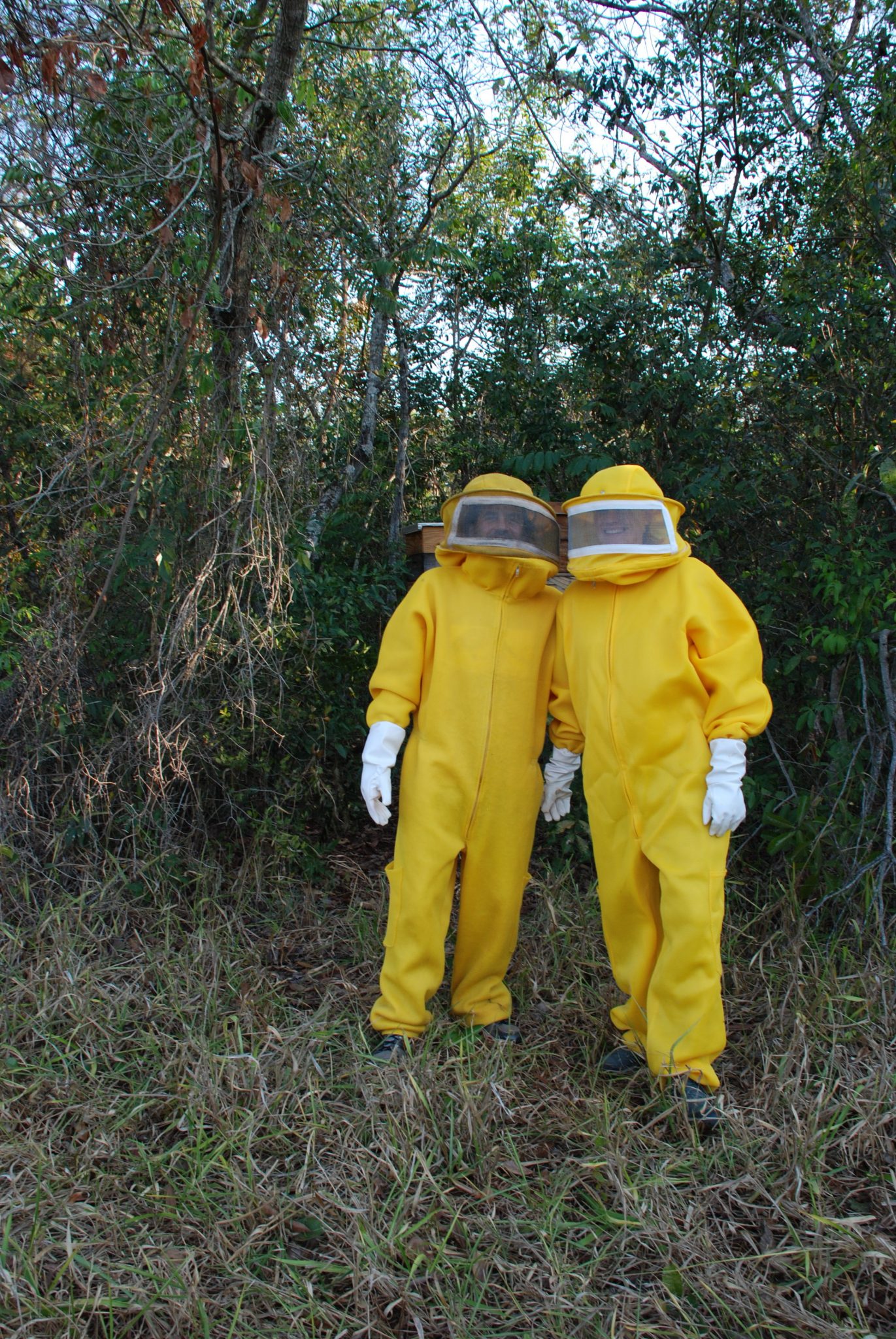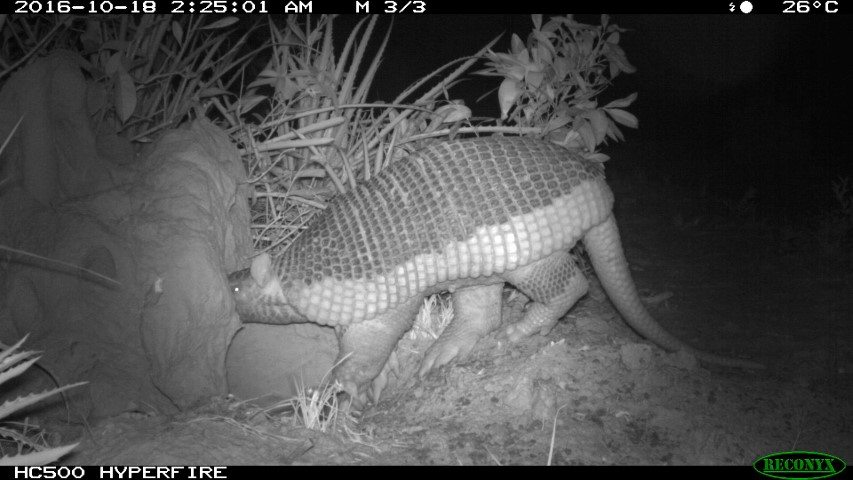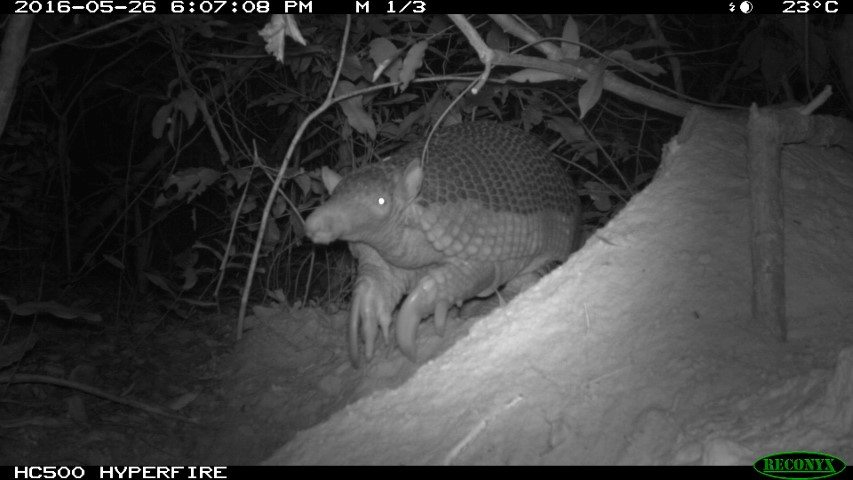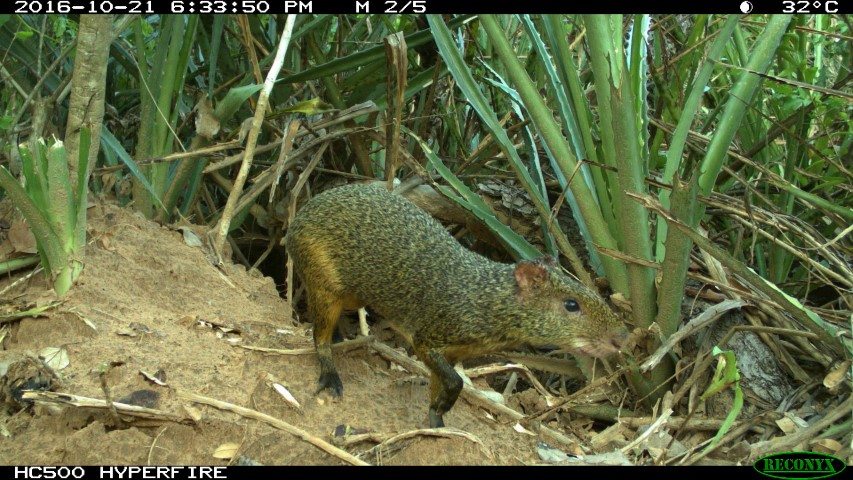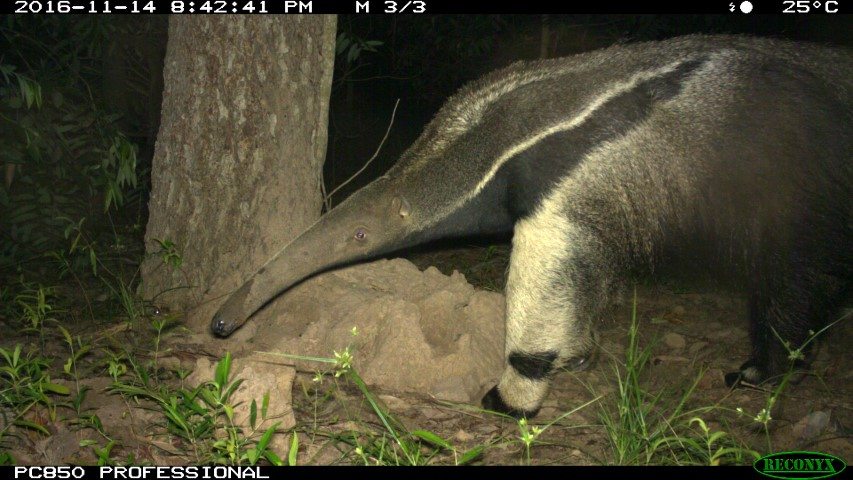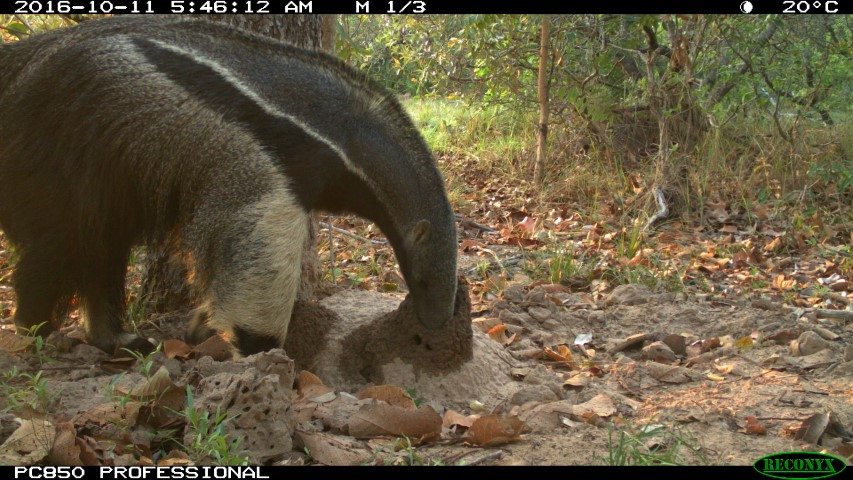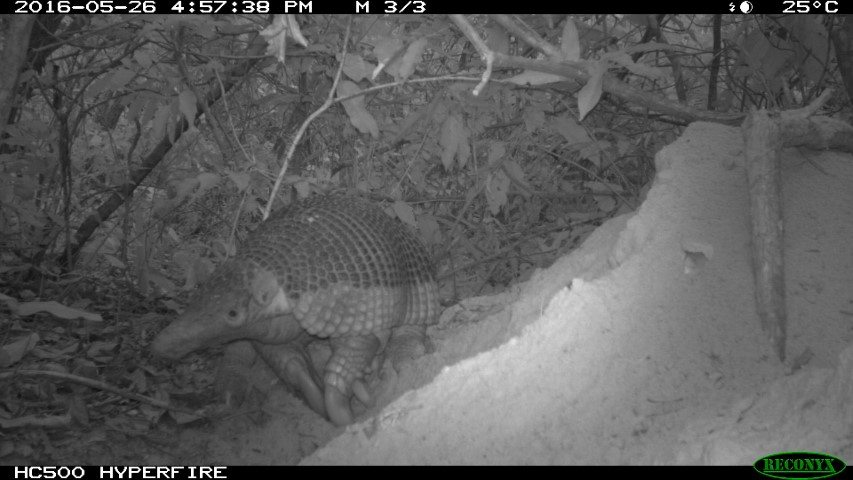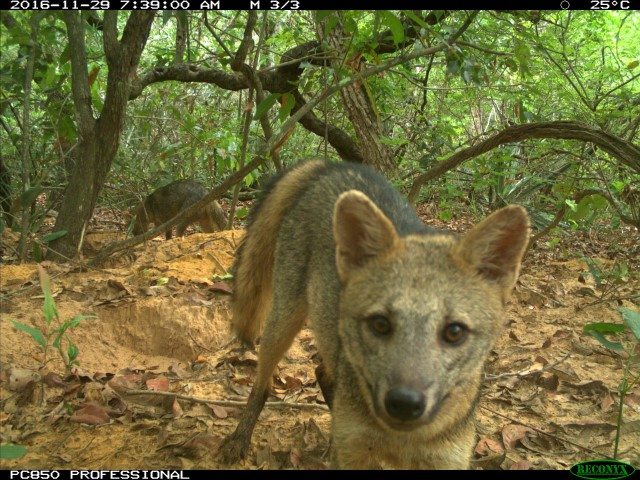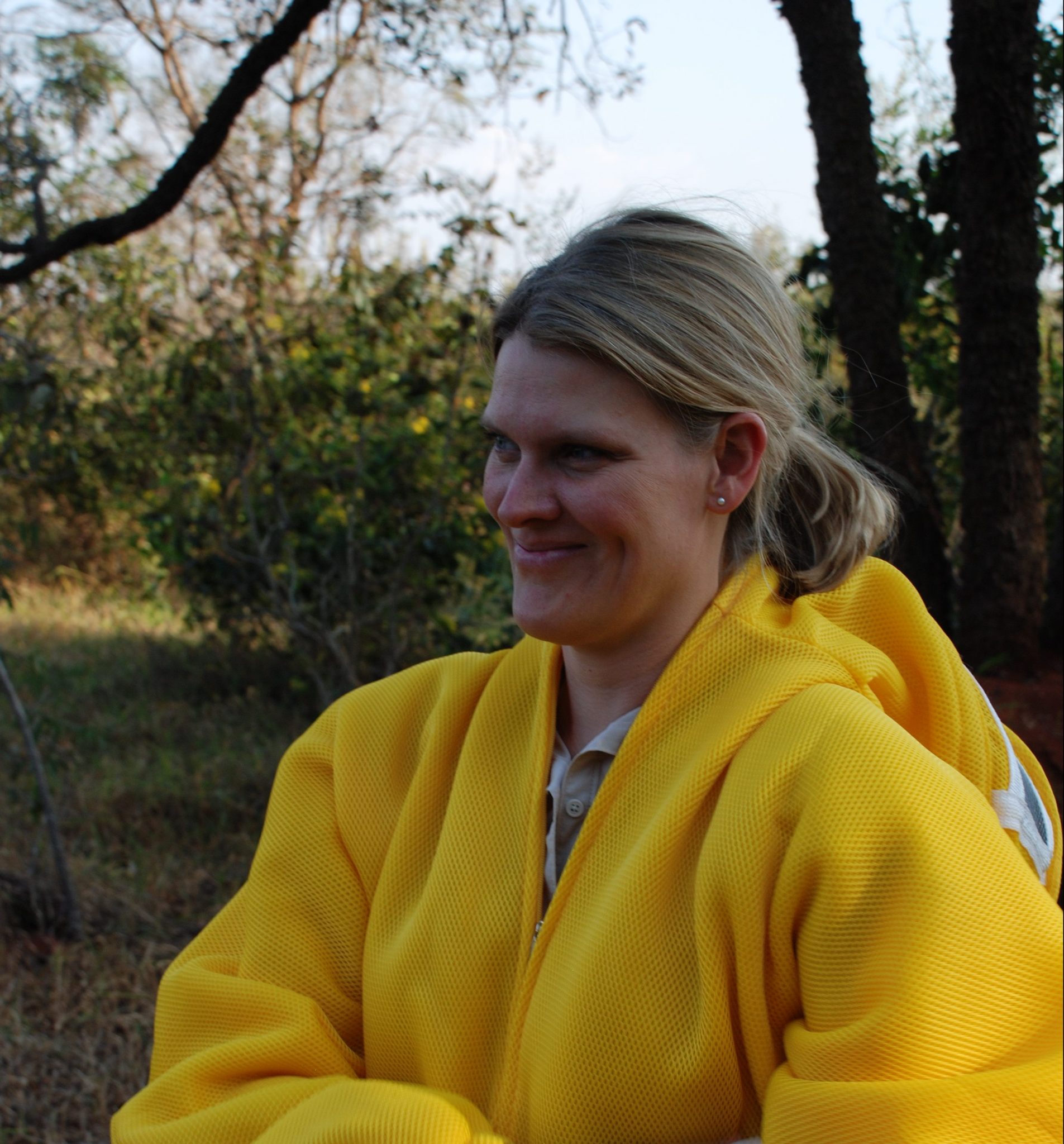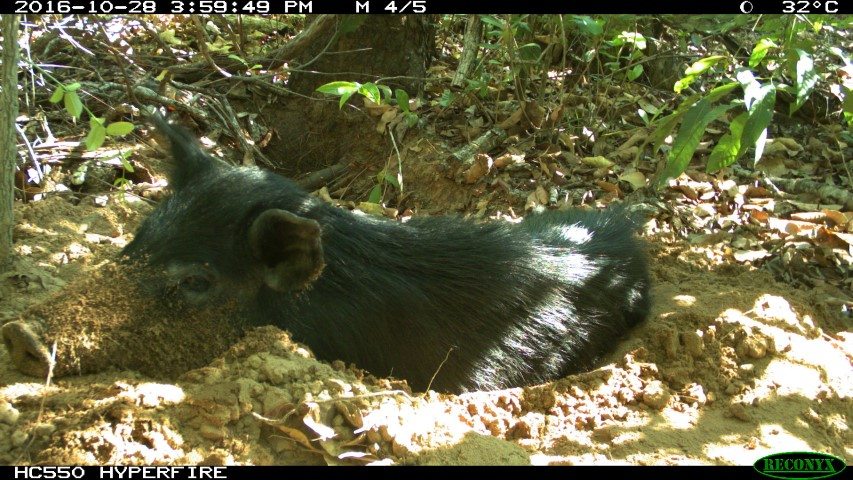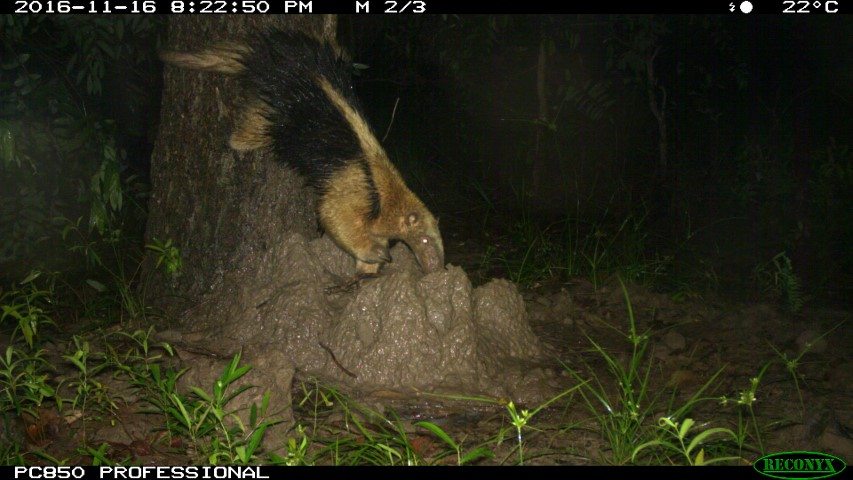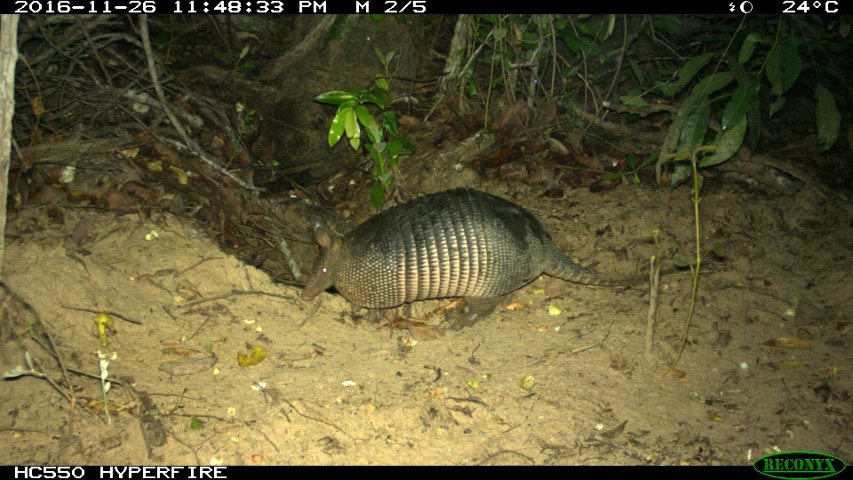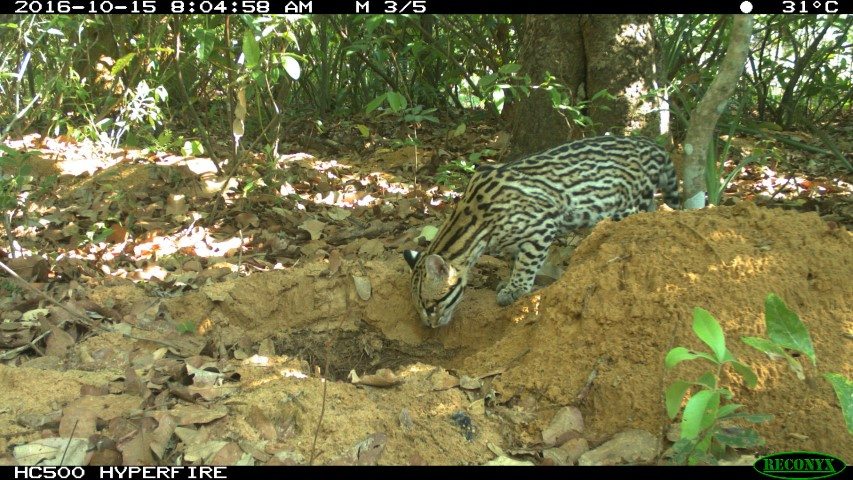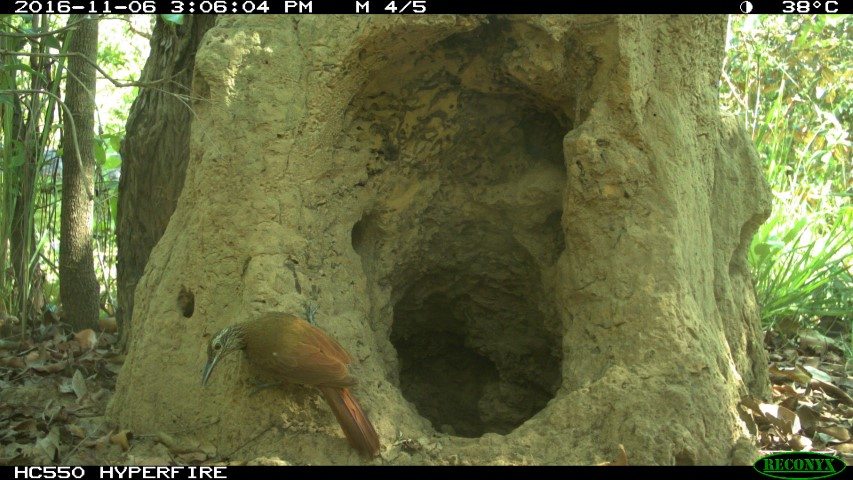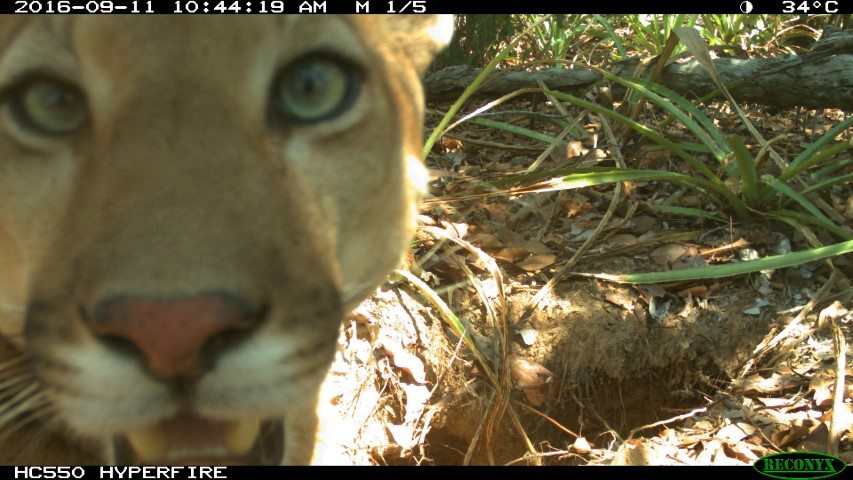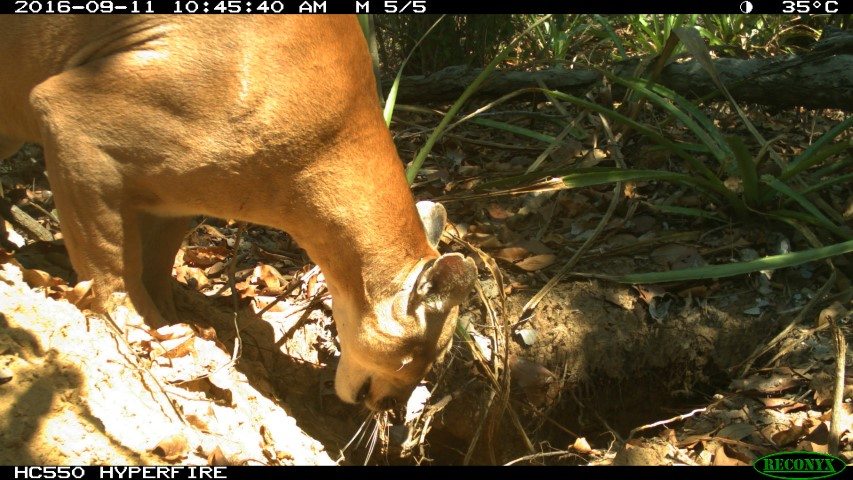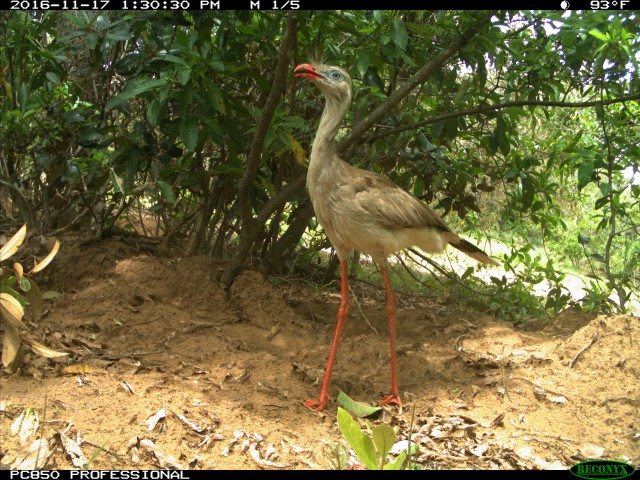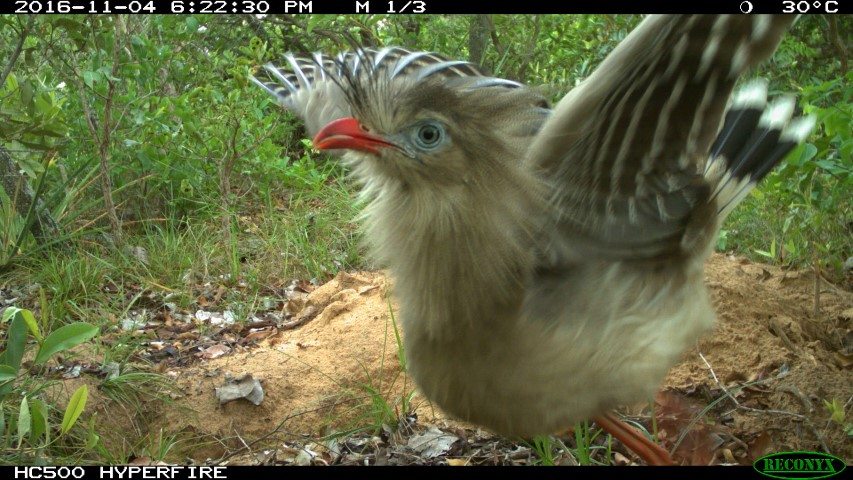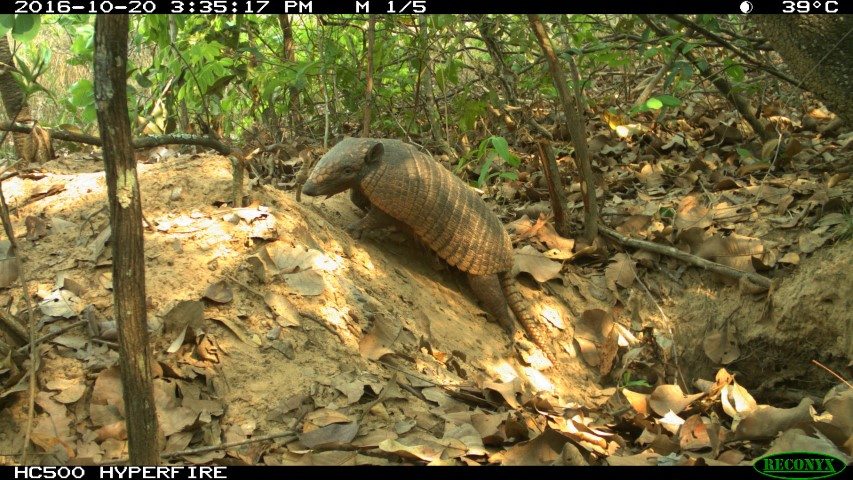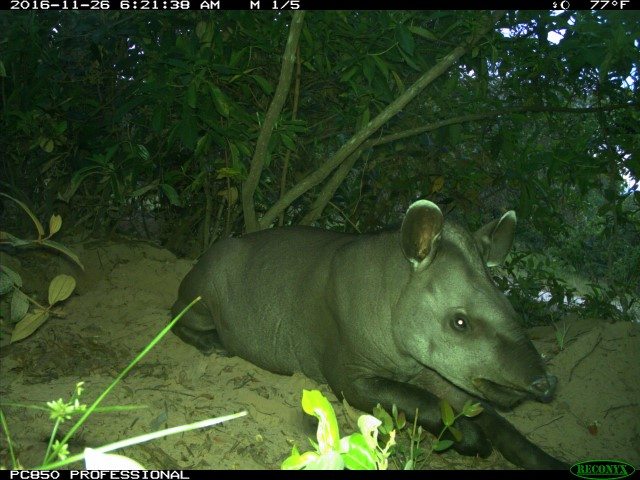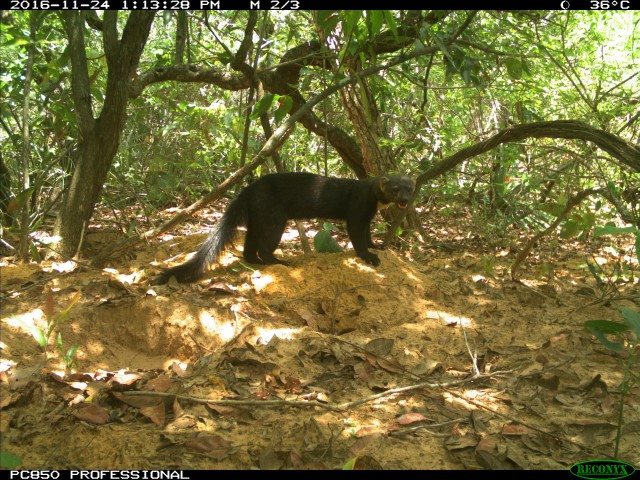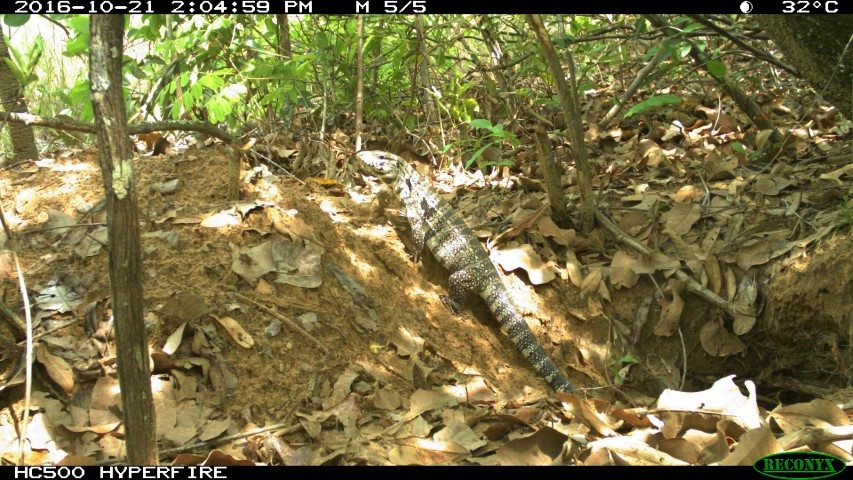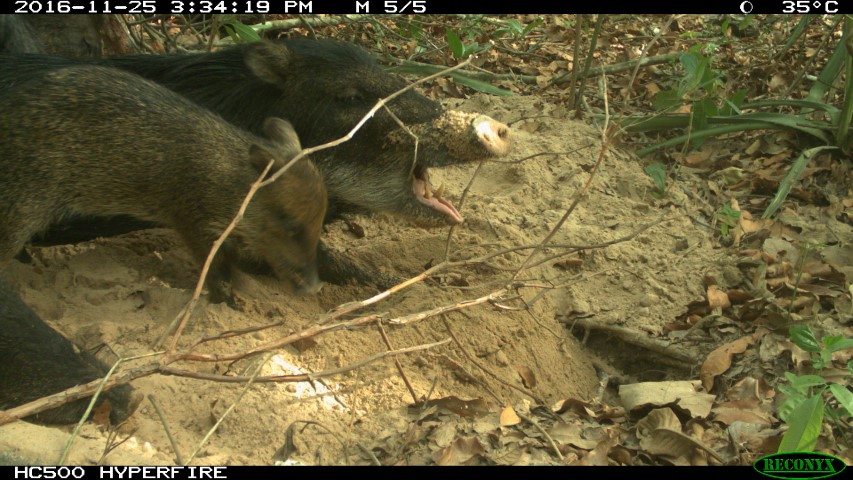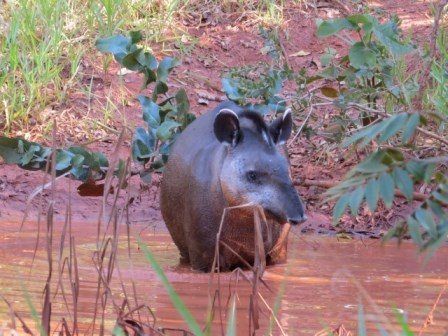An emerging threat to giant armadillos has arisen in the Cerrado; where they’re raiding beehives and are considered bad luck and vermin to the local communities. Alex Zimmermann, Chester Zoo’s head of conservation science and chair of the IUCN human – wildlife conflict task force, has spent some time with Arnaud Desbiez (founder of the giant armadillo project) to research the situation further.
Alex and Arnaud met with beekeepers to get a preliminary understanding of the situation and planned a social survey to assess the scale and depth of this new conflict further. Watch this space for more updates from the project and how the team gets on with this new challenge facing giant armadillos.
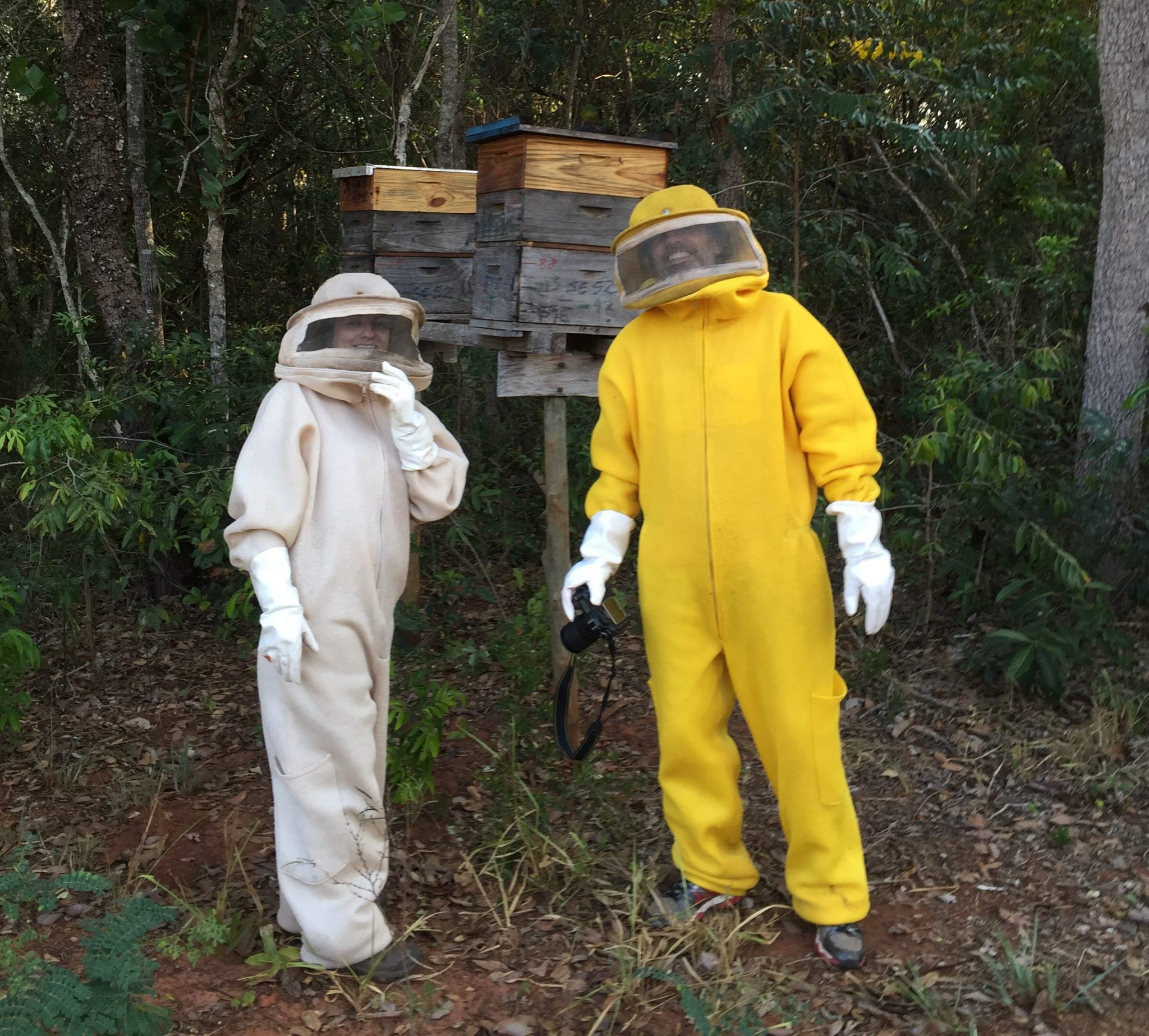
Below Arnaud tells us more about the other activities the project has been up to over the past few months:
“A lot has happened in the past few months; we ran two expeditions in the Pantanal and three in the Atlantic forest. Time was dedicated to launching and starting the Anteaters and Highways Project.
“The expeditions in the Pantanal were shorter than usual and work was greatly hampered by the rain and floods. This is not the time of the year to be in the Pantanal. The aim of this expedition was to retrieve five GPS tags that had fallen off giant armadillos. The water level of the flood plane had really gone up drastically – the team crossed with the truck once and then swam back and forth each day! It was very hard work, hard work, but rewarding and I’m very happy to report that all GPS tags were recovered. Unfortunately two of them malfunctioned and only recorded part of the data. This is very frustrating however there is some good news.
“Emmeline the new adult female we saw in January was photographed with a baby following her. Most importantly, Emmeline which was in poor shape when we caught her in January is now looking healthy and so much better. Our intervention and the treatment she received certainly benefited her. Due to the floods they were unable to spend time searching for Tim the baby armadillo, which was the star of the documentary that aired on BBC Two on 7 April.
“The team also checked on the three giant anteaters we are currently monitoring. In February, two members of the team went to the field to recover the 25 camera traps set up in December to finalize a camera trap grid. Last year we started testing a methodology to detect giant armadillos using an adapted grid methodology. Since last July, three grids were used. We will be analyzing results with the help of San Diego Global. In the meantime, we are happy to report that in the 100km2 area covered we detected all our known animals, as well as a few more. This is very exciting and once the data has been analyzed we will be using this adapted methodology to evaluate densities of giant armadillos in the Cerrado. It was very important that we learn how to place the camera traps to maximize the detectability of giant armadillos. We are relieved that all the animals known to use the particular area were found…next step is doing this density work in the Cerrado.
“We are very excited to announce that surveying for giant armadillos has now started in the Atlantic forest. We are using the same methodology applied in the Cerrado (field surveys, interviews and citizen science). Three expeditions have taken place so far. Survey results in the Atlantic forest have been depressing – only on the third expedition has the first evidence of giant armadillos in this biome been uncovered. It seems the animal has gone extinct, over 30 or 40 years ago in the areas surveyed. Few people from the older generation remember seeing burrows of the animal and hearing about it. You see, in this part of our state, land conversion started over 50-60 years ago. It is impossible not to get a bit depressed by the landscape and the stories or lack of stories people tell. Impossible not to think this is what the future of the rest of our state will be like if major changes are not made. There is a protected area where one person explained that two giant armadillos used to live. They then explained that they were both shot many years ago. In a tiny shop in the small town, the front paw with the giant claw of one of these giant armadillos is proudly exhibited as a trophy. So sad.
What is crazy is people seem to be fascinated by the species. Those who have heard of it speak very positively of it. More than ever I fear the giant armadillo will become a legend, almost a mythical species. We still have this amazing species in our state and we need to protect it.
“We are currently working with the governor’s office to try to get the giant armadillo selected as the symbol of our state. If we could make this happen it would be a game changer. We will continue lobbying until every door is closed. Even then we will try to dig under them…armadillo style!
“The documentary, Hotel Armadillo, (which aired on Fri 7 April) only shows the tip of the iceberg of all the work involved in running a conservation project. However, I do believe it highlights the important role of giant armadillos and shows beautiful images of this poorly known species. I hope to use these images as rallying cry for the species and biodiversity. Our work in the Cerrado is our daily reminder of what we stand to lose. Thank you so much to all of you that make our work possible. The project relies on the support and help from other zoos and organizations. None of this work would be possible without you. We are very, very, grateful. Thank you so much.”
